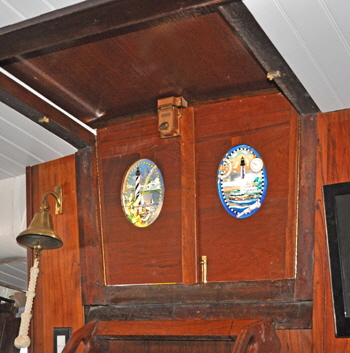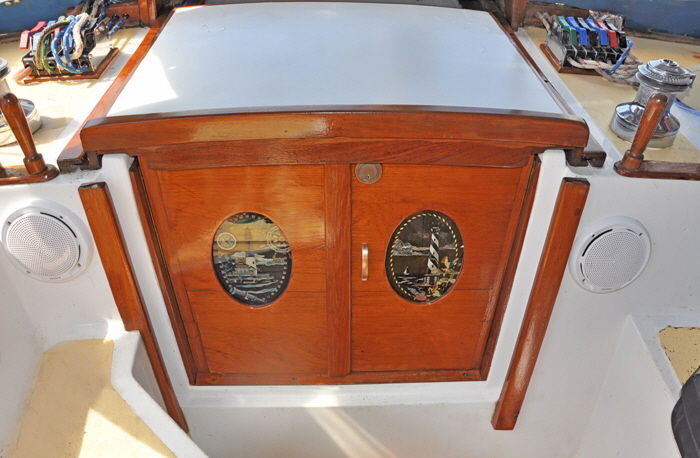 My wife and I were soon heartily fed-up with the two heavy washboards used to close the companionway. When they were in place they completely blocked all light through the entrance and they were very heavy and cumbersome. My wife could hardly lift them in and out, and when they were out there was nowhere to store them in the cockpit.
My wife and I were soon heartily fed-up with the two heavy washboards used to close the companionway. When they were in place they completely blocked all light through the entrance and they were very heavy and cumbersome. My wife could hardly lift them in and out, and when they were out there was nowhere to store them in the cockpit.
 Opening doors were made from the teak washboard timber and the doors hung on piano hinges either side of the companionway. One side locks with a sliding bolt into the bottom sill, and the other with a heavy dead-bolt into the solid beam of the sliding hatch. One door, or both can be open or closed as we wish.
Opening doors were made from the teak washboard timber and the doors hung on piano hinges either side of the companionway. One side locks with a sliding bolt into the bottom sill, and the other with a heavy dead-bolt into the solid beam of the sliding hatch. One door, or both can be open or closed as we wish.
The two washboard slots were left in place so that washboards can still slide into place in front of the doors.
The refurbished entranceway and doors present a very classy appearance for our new “front doors.”
